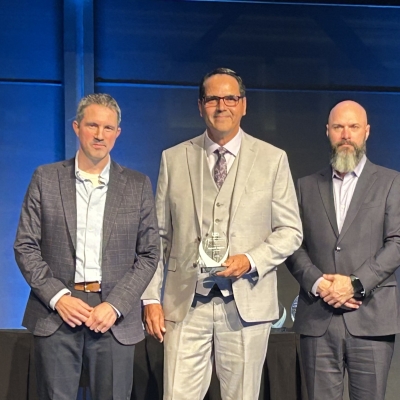Alarm Saves Regina Couple from Carbon Monoxide

Jim and Linda Dickenson decorate their heritage home to draw people from across Regina to be spooked there on Halloween night.
But they were the ones to get a serious scare at home one summer evening.
A colourless, odourless, and tasteless poison was drifting up from their basement and lingering near their second-floor bedroom, one that, over time, could send them to hospital — or even worse.
Jim’s phone rang, surprising them while they watched a loud action movie. They were up on the third floor of their home that warm, dark evening. Their security company was calling.
A presence had been detected inside their home. Their carbon monoxide (CO) alarm, which the security company was monitoring, was sounding.
“I asked them, ‘What do we do?’,” says Jim.
“They said to go outside, and they would call the fire department to make sure things were okay,” says Linda.
As soon as firefighters entered their home, their monitors detected high levels of CO on the main level. It was also found on the second floor, where Jim and Linda sleep. The firefighters exited the house and contacted SaskEnergy.
SaskEnergy Operations Technician Chris Stinson, who works in Regina, gets calls like this once or twice a week.
“Carbon monoxide calls always take priority over anything else. The dangers are very high,” says Chris.
“So, it is very important to get to that call to find out if there's any carbon monoxide in the building.”
The levels of CO were lower in the home when he arrived, thanks to the firefighters ventilating the home. Chris arrived with his gas measuring instrument
(GMI) to test any equipment that burns fuel as possible sources of CO.
“This couple had a boiler system, which provided their heat and their hot water, as well as a gas stove and fireplace,” says Chris.
“I suspected that since the highest levels of carbon monoxide were in the basement, that it was the boiler. So, I fired up the boiler and let it burn for a while. Sure enough, standing in front of the boiler, I started to get levels of carbon monoxide on my GMI, so I knew that was the culprit. The CO wasn’t venting to outside the house as it should.”
He shut the boiler off and tagged it to remain out of service. Jim and Linda have since had their boiler inspected, serviced and recertified as being safe.
While they did not experience physical symptoms of CO poisoning, Jim and Linda are aware of those signs. While CO alarms are the best way to know if CO is building up in your home, some customers have called SaskEnergy because they are experiencing potential symptoms of carbon monoxide poisoning, including headache, muscle aches and more (minus a fever.)
“You might feel dizzy or nauseous and have flu-like symptoms,” said Chris.
“Depending on the amount of CO in the atmosphere, these symptoms can appear within minutes, hours or even days. The more CO that you inhale, the greater the chance that it can become life-threatening.”
The Dickensons were so grateful their CO alarm alerted them to such a serious issue in their home that they texted family and friends and posted on social media right after their incident. They want others to know about their close call and the importance of having working CO alarms. (Jim bought three more for their home that night.)
“Most people think it’s not going to happen, but it happens. We could not be here now,” says Linda.
Chris is glad to know more people are recognizing the importance of having working CO detectors in their homes, ideally one on each level. On those levels with bedrooms, locating alarms near those rooms will wake people up if CO Is detected while they sleep. He also recommends paying attention to gas-burning equipment in and around your home.
“Prevention is also important. What a homeowner can do is to make sure their equipment is functioning properly,” says Chris.
“If you notice any changes with how it's burning or if it's operating differently than normal, get it checked out by a plumber or a technician. Things can be working perfectly one day and the next day not at all. Have your equipment inspected semi-annually.”



